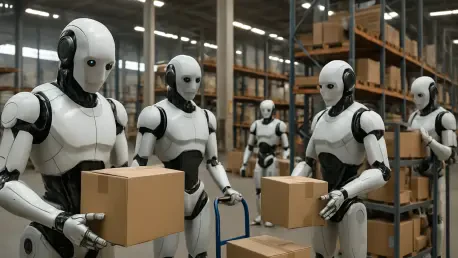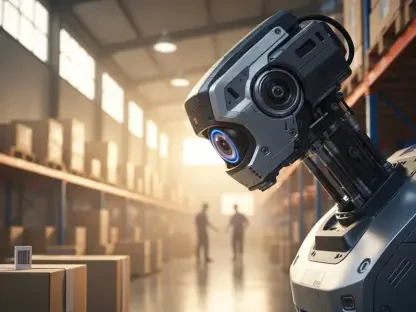I’m thrilled to sit down with Oscar Vail, a renowned technology expert whose insights into quantum computing, robotics, and open-source innovation have positioned him as a leading voice in the industry. With a finger on the pulse of emerging trends, Oscar offers a unique perspective on how advancements like humanoid robots are shaping the future of labor and industry. In our conversation, we dive into the practical challenges of integrating robots into workplaces, the balance between flashy design and real-world utility, the critical role of touch and manipulation in robotics, and the evolving partnership between humans and machines in settings like warehouses and factories.
What do you see as the primary obstacle humanoid robots face when it comes to replacing human labor in environments like factories or warehouses?
The biggest hurdle is adaptability. Humanoid robots often struggle with the unpredictable nature of real-world tasks. Humans can adjust on the fly to unexpected situations, like a spilled box or a misaligned item, but robots still lack that intuitive problem-solving ability. It’s not just about programming them for specific tasks; it’s about enabling them to handle the chaos of dynamic environments without constant human intervention.
Are there particular tasks that robots just can’t match humans on yet, even with current advancements?
Absolutely. Tasks requiring fine motor skills or nuanced judgment are still a challenge. Think about packing fragile items or assembling components with irregular shapes—robots often lack the dexterity or the contextual understanding to avoid damage or errors. Even in advanced setups, they might mishandle something as simple as a soft package because they can’t gauge pressure or texture like a human hand can.
How far do you think we are from bridging these gaps in robotic capabilities?
I’d say we’re a decade or two away from significant breakthroughs, depending on investment and research focus. Advances in machine learning and sensor technology are promising, but we need more robust systems for real-time learning and adaptation. It’s not just about hardware; the software to mimic human intuition is incredibly complex and still in early stages.
You’ve mentioned that some robotics development seems to prioritize technology for its own sake. Can you unpack what you mean by that?
Sure, it’s about chasing wow-factor over utility. Some companies develop robots with impressive aesthetics or gimmicky features—like breakdancing or intricate movements—that grab headlines but don’t address practical needs. It’s more about marketing a futuristic image than solving actual problems in industries like logistics or manufacturing, where efficiency and reliability matter most.
Can you point to any examples where humanoid robots look amazing but fall short on solving real issues?
There are robots showcased at tech expos that can mimic human gestures or navigate complex terrains, but when you dig deeper, their practical application is limited. For instance, a robot might walk on two legs flawlessly but can’t pick up a variety of objects without extensive reprogramming. The focus on form over function means they’re more of a spectacle than a tool for everyday use in a warehouse or factory setting.
How should companies shift their focus to ensure robots are functional rather than just visually impressive?
It starts with identifying the core problems they’re trying to solve—whether it’s reducing repetitive strain on workers or speeding up sorting processes. From there, design should follow function. Invest in technologies like better sensors or adaptable grippers rather than perfecting a human-like gait. The goal should be measurable impact, like cutting down task time or error rates, not just creating something that looks cool on a stage.
With companies like Amazon deploying over a million robots, what kinds of tasks are these machines taking on in their operations?
They’re handling a lot of the heavy lifting—literally. Robots are used for picking and sorting items, moving heavy loads across warehouse floors, and transporting goods between stations. These are tasks that are repetitive and physically taxing for humans, so robots take on the bulk of the grunt work while ensuring precision and speed in high-volume environments.
In what ways do these robots support human workers in their daily routines?
They act as force multipliers. By automating mundane tasks like hauling carts or scanning inventory, robots free up human workers to focus on more complex activities—like quality control or handling exceptions that machines can’t process. It reduces physical fatigue and allows people to engage in roles that require creativity or decision-making, making the workplace safer and more efficient.
You’ve stated that full automation isn’t realistic. Can you explain why you believe that’s the case?
No system can account for every variable in the real world. There will always be edge cases—unexpected damages, unique customer requests, or equipment failures—that require human judgment and empathy. Robots excel at consistency, but they lack the emotional intelligence and adaptability humans bring to problem-solving. That’s why a hybrid model, where machines and people collaborate, is more feasible than a fully automated future.
Looking ahead, what role do you envision humans playing alongside robots in industrial settings?
Humans will likely shift into supervisory and strategic roles. They’ll oversee robotic systems, troubleshoot issues, and make high-level decisions about workflow or design improvements. They’ll also handle interpersonal aspects, like customer interactions or team coordination, that robots can’t replicate. It’s about leveraging human strengths—creativity and adaptability—while robots handle the repetitive and predictable.
Humanoid robots often grab attention for feats like walking on two legs. How practical are these features in real-world applications?
They can be useful in specific contexts, like navigating uneven terrain or climbing stairs in environments where wheeled robots might struggle. Think of disaster response scenarios or construction sites where mobility over rough ground is key. But in most industrial settings, like flat warehouse floors, bipedal movement is overkill and less efficient than simpler designs like wheeled bases.
Why is a sense of touch and manipulation so vital for robots to be effective in tasks?
Without a sense of touch, robots can’t interact with the world in a meaningful way. Manipulation—being able to grasp, adjust, and handle objects of different shapes, weights, and textures—is critical for tasks like packing or assembly. A robot that can’t feel pressure risks crushing delicate items or failing to secure a grip, which limits its usefulness in diverse settings.
What’s your forecast for the future of robotics, especially in terms of achieving human-like interaction with objects and environments?
I’m optimistic but realistic. Over the next 10 to 15 years, I expect significant strides in sensor technology and AI that will allow robots to better mimic human touch and adaptability. We’ll see them handling a wider range of objects and tasks, especially in industries like e-commerce and healthcare. But true human-like interaction—where robots can intuitively respond to any object or situation—might still be a few decades away. The key will be integrating advancements in physical AI with practical, problem-driven design.









